List of Ancient Egyptian Pharaohs:
- Mina
- Tutankhamun
- Ramses II
- Tuthmosis the Third
- Hatshepsut
- Akhenaten
- Djoser
- Khufu
- Snefru
- Khafre
- Nefertari
- Pepi II
- Seti
- Cleopatra VII
- Twosret
Who were the Pharaohs in ancient Egypt?
Ancient Egyptian pharaohs: A Pharaoh was the most important and powerful person in the kingdom. He was the head of the government and high priest of every temple. The people of Egypt considered the pharaoh to be a half-man, half-god.
originally the meaning of the word Pharaoh is a great house, and therefore this name was called the royal palace in ancient Egypt, and this word was used initially in the ruling family No. 18 in 1539-1292 BC, and was adopted as a sign of respect for the solutions of the dynasty of 22 of the ruling family, In official documents, the name of the ruling king was preceded by one of the five titles: Horus, two women, Horus al-Thahabi, king of Upper and Lower Egypt, and IbnRai, and the last title was given at birth, and other titles were granted during the coronation, the Egyptians believed that the pharaoh was the mediator between them and the gods Whereas after death, the pharaoh becomes the goddess of pain He culminated, and his son crowned and became responsible for the arrested authorities after the death of the original pharaoh, and all powers were in his hands, and the divine status of the pharaoh was depicted that he could kill his enemies through the snake on the crown, and his ability to crush thousands of enemies on the battlefield, and that he possesses the power With his hands.
Top 15 Ancient Egyptian pharaohs
1. “Mina”: (from 3201 to 3101 BC)
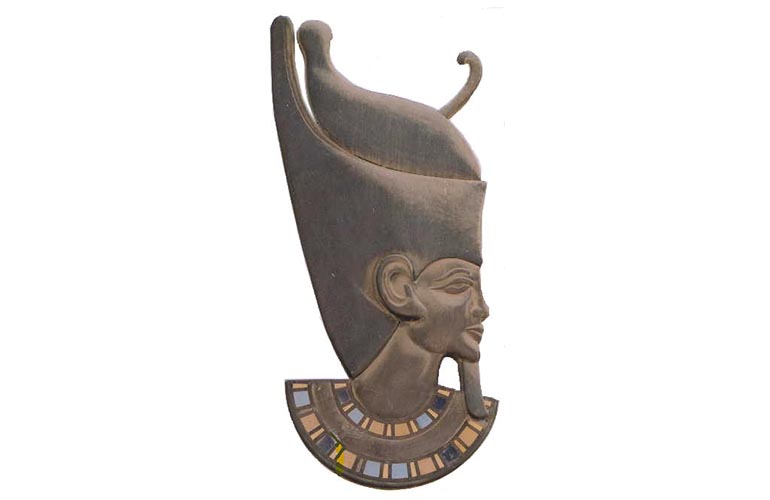
King “Mina”, who is also known as “Narmer“, was the first Pharaonic king to rule Egypt after the unification of Upper and Lower Egypt, and he established the first Pharaonic family in 3150 BC, and established the city of Memphis, as the capital of ancient Egypt, He is credited with diverting the course of the Nile in Lower Egypt.
2. “Tutankhamun” (1341 – 1323 BC)
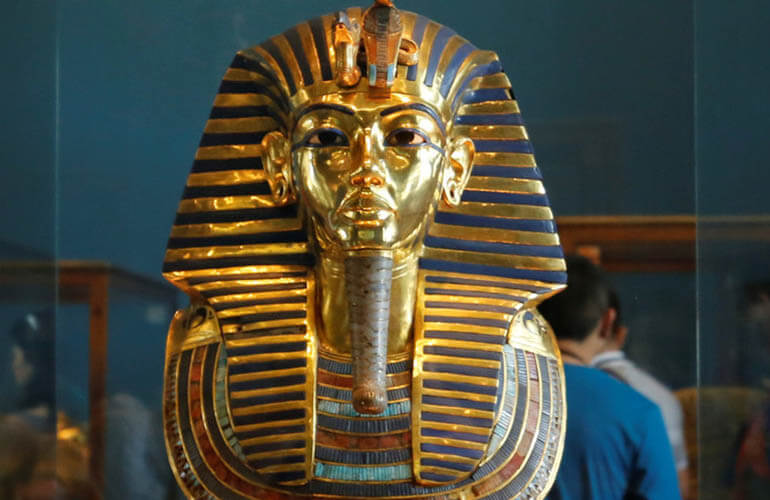
Tutankhamun is one of the most famous kings of Ancient Egyptian pharaohs ever, for several reasons, including that he was the youngest pharaoh in the history of Egypt, and he assumed the throne in 1332 BC, when he was nine or ten years old, and he died before reaching the age of twenty.
His tomb was discovered in 1922, which achieved great fame and attracted the attention of the entire world to the extent and value of the Pharaonic civilization, as it was one of the greatest archaeological discoveries in the twentieth century, in addition to that the mask of “Tutankhamun” golden has become one of the most famous symbols of ancient Egyptian civilization.
3. “Ramses II”: (1303 – 1213 BC)
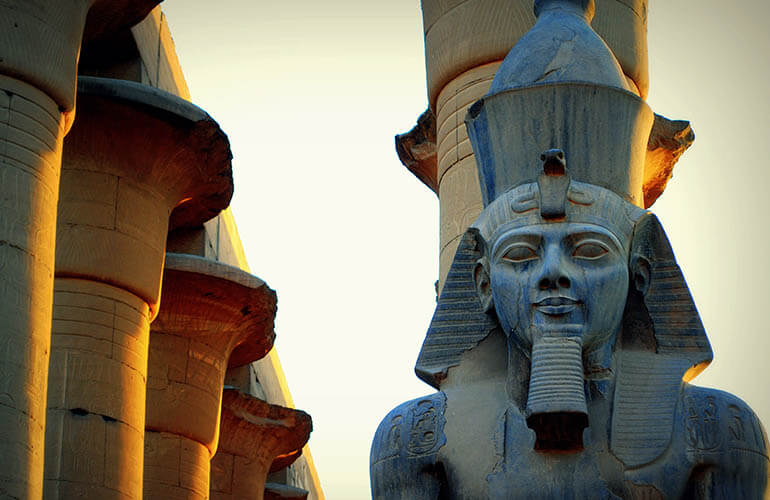
Ramses II is one of the most powerful Ancient Egyptian pharaohs who ruled ancient Egypt, and since assuming power in 1279 BC until his death in 1213 BC, he built great temples, among them the Temple of Ramsium and the Temple of Abu Simbel, and he also had a genius Military, and he had an army of 100,000 warriors, leaving a footprint and a great historical impact, to the point that at least 9 other pharaohs were named after him.
4. “Tuthmosis the Third”: (1481-1425 BC)
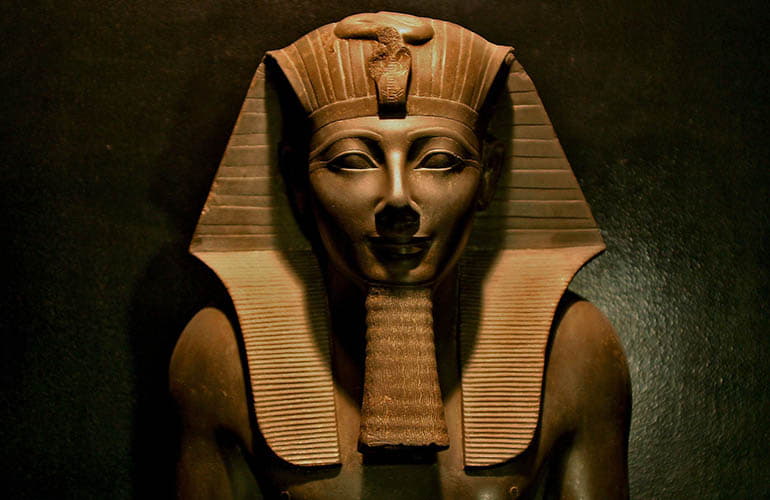
King Tuthmosis the Third, who ruled Egypt from 1479 until his death in 1425 BC, is called “Napoleon of ancient Egypt”; and during the first 22 years, he ruled alongside his stepmother, Queen Hatshepsut, and after her death, he established the largest empire witnessed in ancient Egypt, and his military conquests contributed to the great wealth of the country, as it transformed him into a national hero.
5. Hatshepsut: (1507 – 1458 BC)
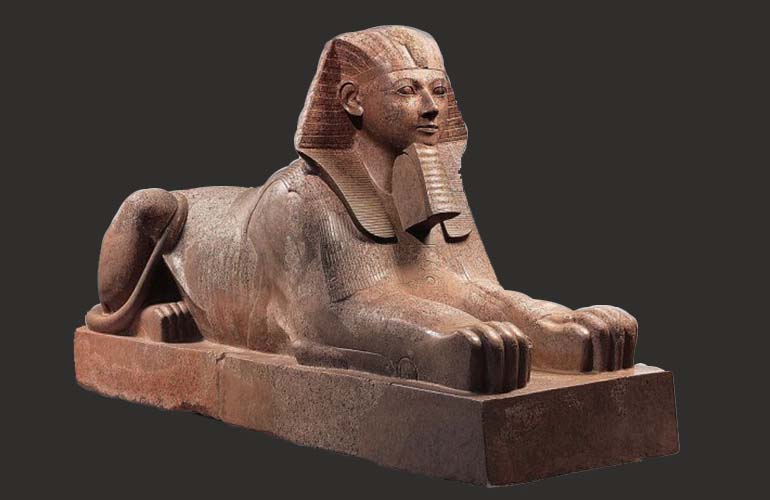
She is one of the most famous queens who ruled ancient Egypt, and she acted as the guardian of “Thutmose III”, who was unable to take power alone after the death of his father, “Thutmose II” due to his young age, and the period of 22 years in which she took power was next to “Thutmose III”, Very successful, as I ordered the creation of hundreds of buildings and statues.
During her reign, Egypt lived in peace and prosperity, but “Tuthmosis III” removed her image from all the temples and monuments after her death. [ Read more about Hatshepsut definition ]
6. “Akhenaten”: (1380 – 1336 BC)
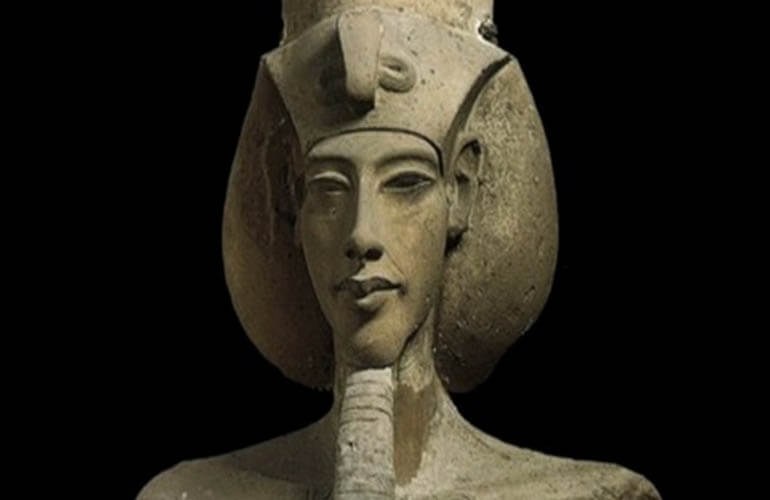
Akhenaten ruled Egypt for 17 years, from 1353 to 1336 B.C., and is historically famous for being the pharaoh who called for the worship of the god Aten, but after his death, the country returned to worship the ancient goddess, and his wife, Nefertiti, also occupies great historical fame, so that he was said that he was his partner in governance.
7. “Djoser”: (2650 – 2575 BC)
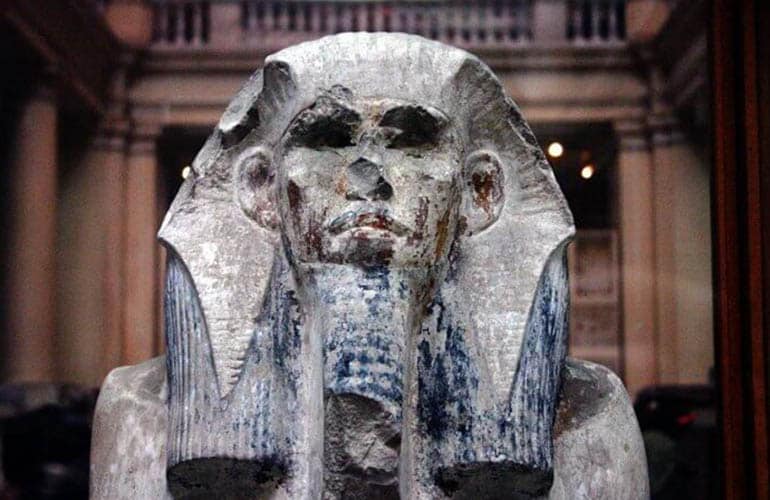
King “Djoser” is the second king of the third pharaonic family, and it is believed that he ruled the country for 19 years, and built the first pyramid included in ancient Egypt, which was named after him, and also gained great historical fame thanks to a limestone statue, which is the oldest Egyptian statue in size Natural.
8. “Khufu”: (2620-2566 BC)
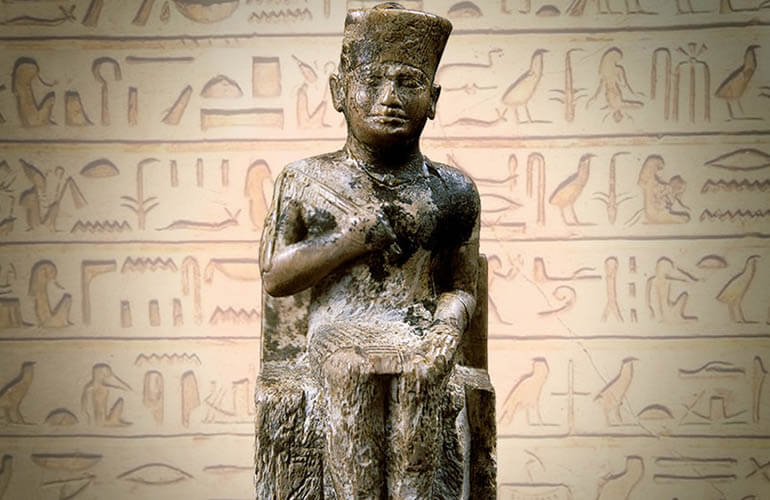
King Khufu’s name is associated with the Great Pyramid of Giza, which he built, and is considered one of the seven wonders of the world, and its height was basically 481 feet; and the rule of Khufu lasted for at least 24 years, and King Khufu has only one ivory statue of length About 9 centimeters, it was discovered in 1903, and can be seen in the Egyptian Museum in Cairo.
9. Snefru reigned for 24 years (2613–2589 BC).
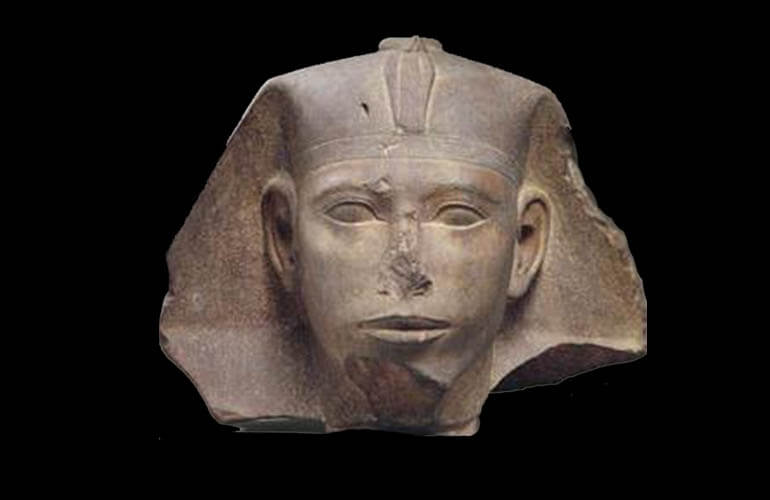
Snefru is the founder of the Fourth Pharaonic dynasty, and he has ruled Egypt for 24 years, according to what was mentioned in the Turin Papyrus.
King Senefru was one of the most prominent and important kings, and he was revered by all generations during and after his reign.
– King Senefru married Mrs. Hattab, and some sources state that she was the daughter of Honey, which caused Senfu to obtain legal authority to govern the country, because she had the right to inherit the country’s rule after the death of her father, Hanni. As for the mother of the king We are known as Mrs. Maras Ankh, and the cemetery of this lady is located in Meidum.
10-King Khafre
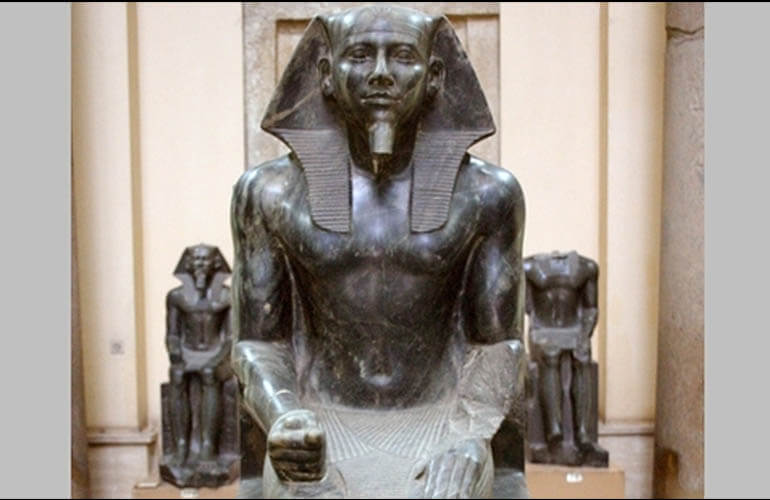
King Khafra, who is one of the sons of the pharaoh Khufu younger, who lived and made his reputation during the 26th century BC, and he is also the fourth king of the fourth family that ruled Egypt during the period between (2575-2465 BC), as he succeeded his half-brother Djidf Ra (in English: Djedefra) in the ruling, and he followed his approach in explaining the importance of the worship of the sun god (Ra) and called himself (Ibn Ra), and he ruled Egypt in the period between (2558-2532 BC), and he who built the second pyramid of The Pyramids of Giza, and it is worth noting that he had married four wives, including: KhaMererNabti (English: Khamerernebti), and Mars III Ankh (English: Meresankh III).
11-Nefertari
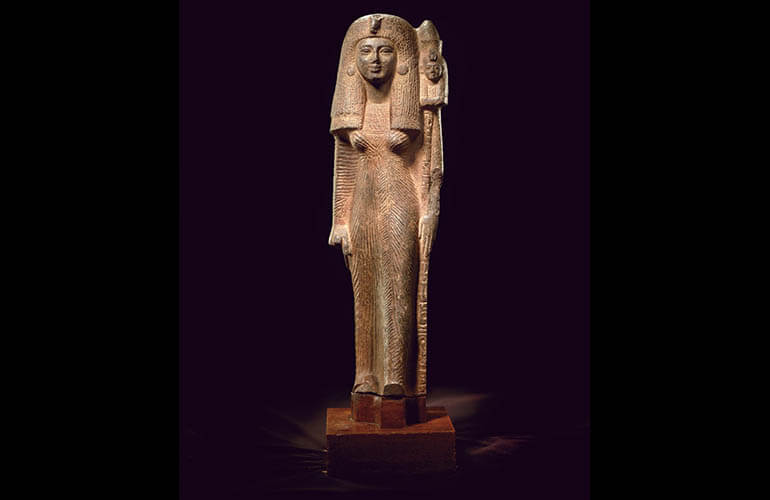
Neferefre, also called Raneferef, was a pharaoh of the 5th Dynasty during the Old Kingdom. He must have had a short reign because his pyramid only reached its lowest courses. Records state that Neferefre built a sun-temple but Egyptologists do not know its location. Excavators discovered a store of papyri in his pyramid temple. These provided information about the economic, administrative, and religious practices during the 5th Dynasty.
12-Pepi II
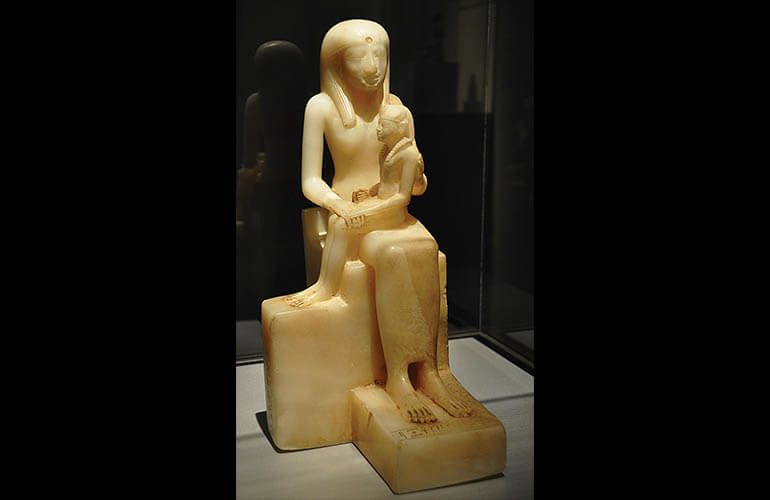
The fifth Pharaoh of the Sixth Dynasty in the era of the ancient Egyptian state, his royal name is “Neferka Ra”, which means “beautiful is the soul of Ra”. He assumed power as a young child, not older than six years and lived until he reached the hundred, so he has ruled 94 In general, which is the longest rule in history, his son, King of Egypt “Baby II” The second half of Pepi II’s reign was a time of economic crisis. Circumstances forced him to establish an economic overseer in Upper Egypt.
13-King Seti the First “of Ma’at Ra,” the Wise King
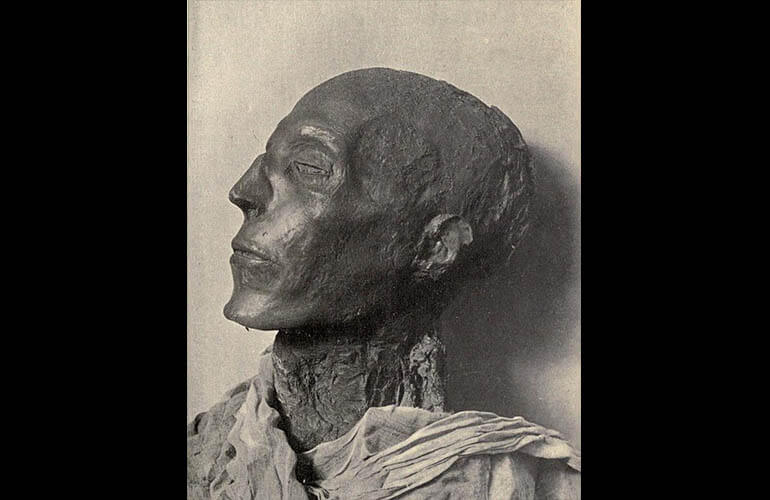
King Seti is considered the first of the family 19, he is the son of King Ramesses the First, and the father of King Ramses II was born 1303 BC, and he took over after he passed the age of forty, then he combined the maturity of age and wisdom in taking over the country, and took several steps to eliminate corruption and prevent bribery and looting, He stressed the punishment for assaulting the properties of temples and individuals, and he was seen as the one who would restore the glory of the country, and the period of his rule lasted 20 years, during which he wars in the Levant and against the Hittites and defeated them with all force, and concluded with their king a friendly treaty, and is considered the most important wars he is in Palestine with (El Chaso) tribes, that is, the Asian nomads, as they were related to the Bani Israel,
14-Cleopatra VII
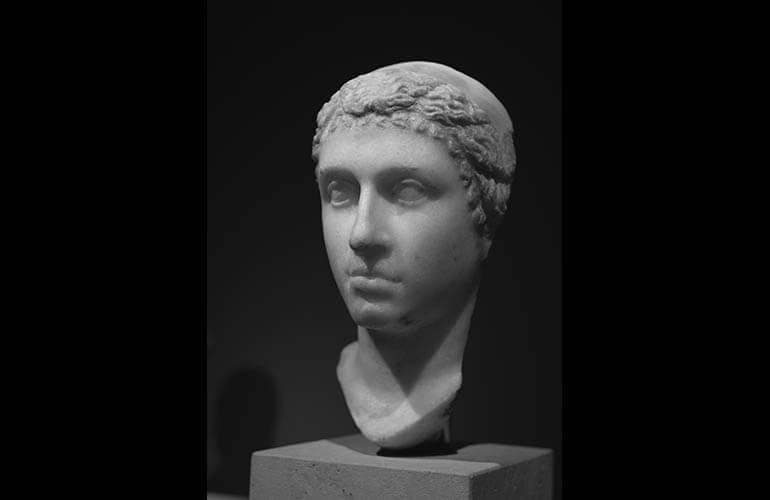
Cleopatra VII Philosopher (69 BC – 12 August 30 BC) was an Egyptian queen and the last pharaoh of ancient Egypt. She was a member of the Ptolemaic dynasty, a Greek-speaking dynasty that ruled Egypt in 300 BC. Deposited from power by her brother, She is aligned herself with Julius Caesar to regain the throne. After Caesar’s murder, she became Mark Antony’s lover. But after Mark Antony was defeated by Octavian’s forces during the Roman civil war, Antony and Cleopatra committed suicide, rather than fall into Octavian hands. His death marked the end of the Ptolemaic kingdom of Egypt – and Egypt was absorbed by the kingdom of the Ptolemaist.
15-Twosret
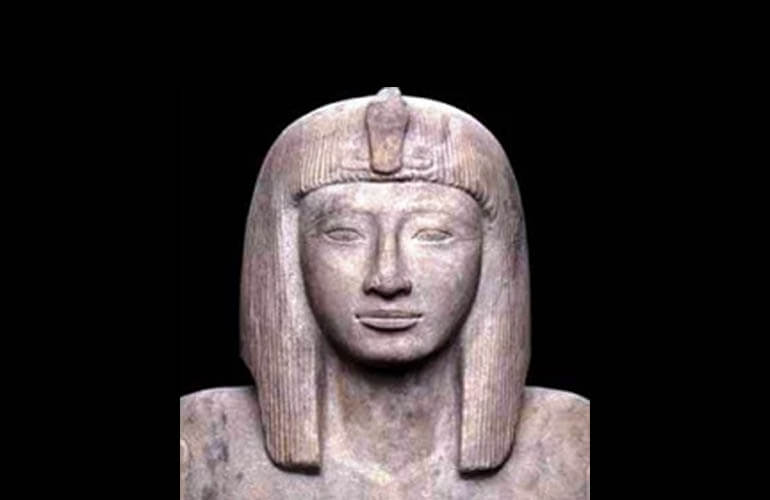
Queen Twosret last ruler of the 19th Dynasty, and the Egyptian historian ManitonSamanudi called her “Thoris”, and she ruled for about two years as the sole king of Egypt, and her name means “strong.”
The reign of Seti II Egypt was six years unmarked, and his elder wife was Twosret, and since his successor died, the throne moved to Ramses-Sabtah who may have been the second son of Seti (second foreign wife may have been Sotilja) or perhaps he was the son of Amun Miss.
From the third year of the reign of this king, he changed his name to Merneptah -Sabah, known as Sibah. Perhaps this king was ill, as was evidenced by the examination of his mummy, so he needed a partner in government. His mother was not suitable to do this, possibly because of her foreign origins, her lack of royal origin, or her death.
And Twosret played this role for her son’s son. She did not bear the title “daughter of the king”, but she was perhaps a son.
16- Pharaoh Djedefre
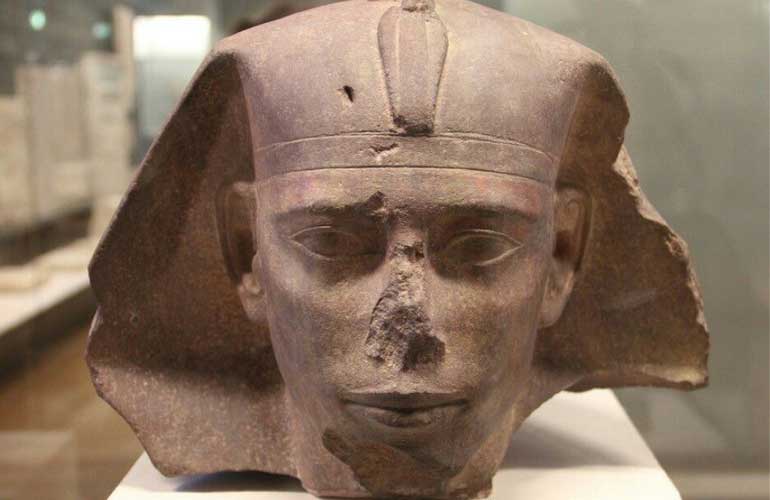
Pharaoh djedefreThird king of the IV Egyptian dynasty, son and successor of Khufu. According to the Royal Papyrus of Turin, he ruled for eight years, although some Egyptologists assign him a short reign considering him even a usurper. In fact, he was the eldest son of Khufu and of a wife whose name is not known for sure. Djedefre was the first pharaoh to be called “Son of Re” (Sa Ra). He married his half-sisters Khentetka and Heteferes II, which gave him the support, totally legal, to occupy the throne. The events of her reign are ignored, which some people presume agitated. Although the king is mentioned in the Stone of Palermo and in the List of the Wadi Hammamat, nevertheless, in one of the contemporary steles, allusive to the biography of a favorite of Khufu and Khafra, his name is omitted, as it is also in the stories of the Westcar Papyrus, where almost all the sons of Khufu are nominated. Its pyramid, 105 m on each side, was built north of Gizeh, in Abu-Roash, but remained unfinished. Fragments of statues of the king (bust from the Louvre Museum), his wife Khentetka and his sons Setka, Baka and Harnet have been found there.
17- Egyptian Pharaoh Menkaure
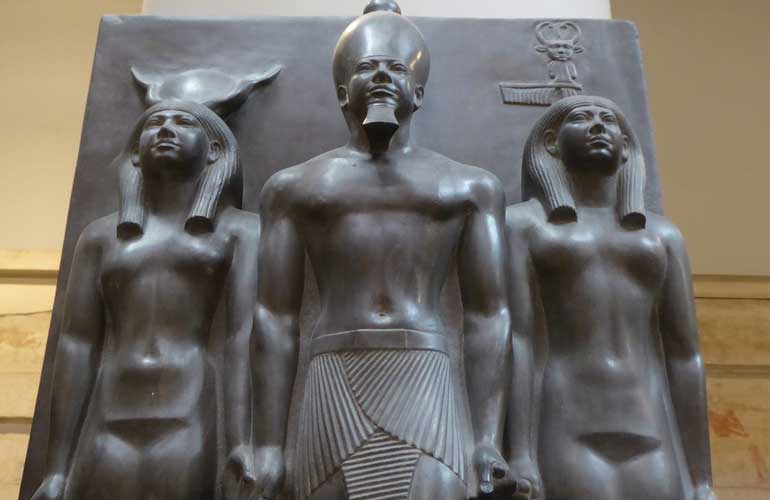
Pharaoh Menkaure of the fourth Egyptian dynasty, son of Khafra and his wife Khamerernebty I. After the governments of his uncles Hordjedef and Baefre, he ascended the throne of Mycerinus (in Egyptian pharaoh Menkaure), which was named Horus Kakhet. and assigns him 63 years of reign, a figure totally exaggerated; Herodotus, on his part, calls him Mykerinos, making him the son of Khufu and considering him a just and benevolent king. Few things are really known about his reign: Egyptian presence in Nubia by the stamps found with the name of Mycerinus, return to the clergy of some prerogatives and construction of temples. It is of great interest its pyramid, the smallest of the three of Gizeh (108 m of side for 66 of height), in whose sepulchral chamber was found the sarcophagus of basalt and remains of its mummy. His funerary temples have provided more than 40 different statues of Menkaure, among them the four beautiful triads where the king appears among goddesses (three examples in the Museum of Cairo and one in the Museum of Boston) or the piece that represents him standing next to his wife and sister Khamerernebty II, today in the Museum of Boston.
18- Pharaoh Unas
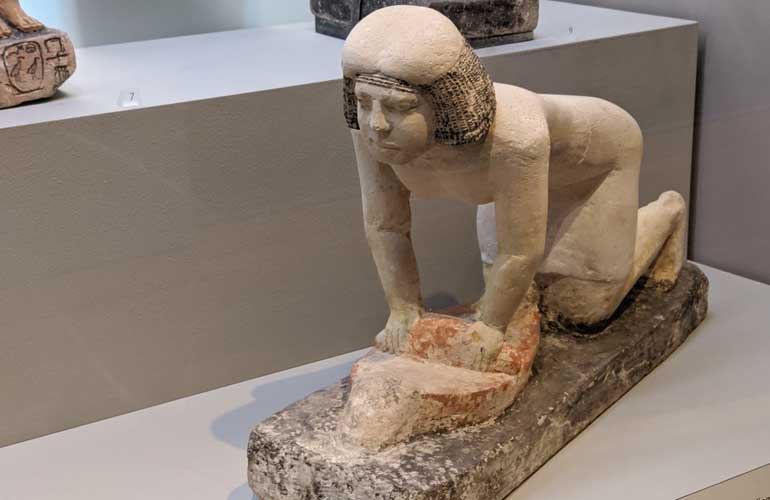
Pharaoh Unas Ninth and last king of the fifth Egyptian dynasty, a successor of Djedkare Isesi, perhaps his father. He reigned for thirty years, according to the Royal Papyrus of Turin, or thirty-three, His name Horus was that of Ouadjtauy, In his small pyramid, built in Saqqara, the king had inscribed for the first time, on the internal walls, a series of religious formulas known as the Pyramid Texts, and that until his time had been transmitted orally. In fact, they constituted the most ancient funerary ritual of humanity. In spite of having been violated this pyramid in the IX century of our era, still in 1881 some remains of the king’s mummy could be collected, among other objects. Although the state of the pyramid is ruinous, part of its bas-reliefs and other elements have arrived (today in the Louvre and Cairo museums) which allow us to deduce that Unas carried out campaigns in Nubia and against the Asians and Libyans, as well as diplomatic contacts with Byblos. Some married Khenut and Nebet, whose mastabas were built near the royal pyramid. Of some of them he may have had Ipuet, wife who was of Teti and mother of Pepy I. When he died, King Unas was deified, and his cult survived for many centuries.
19- Mentuhotep II
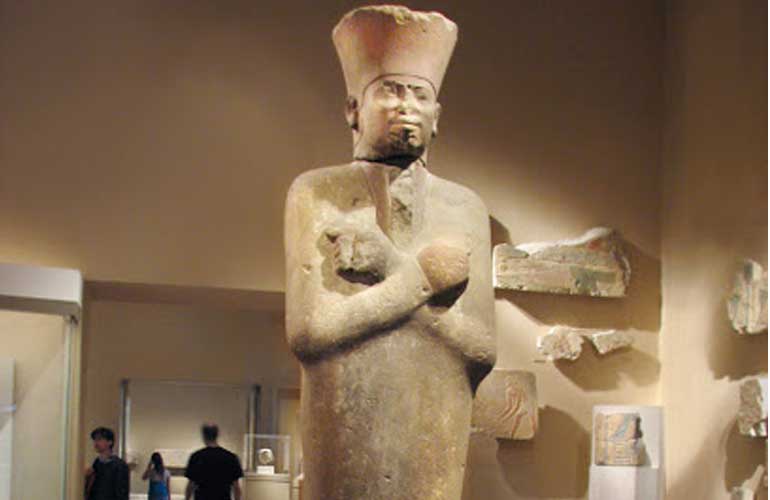
Mentuhotep II Fifth king of the XI Egyptian dynasty and the most important sovereign of the same. Thanks to his good political and excellent military skills he was able to reunify Egypt again after the serious disturbances that were dragging on from the so-called First Intermediate Period. Mentuhotep II was the son of the Theban king Intef III and of Iah.
Mentuhotep II, following the tradition of the previous kings, began the construction of temples: practically all Egypt has some construction of his; however, the building activity was greater in Upper Egypt (Abydos, Ombos, El-Kab, Elephantina, Medamud, Armant). Instead of building his tomb next to that of his ancestors in the west of Thebes, he did it in the desert valley of Deir el-Bahari, adopting a new spatial structure and constituting in reality a grandiose funerary complex (28 tombs were made for queens, princesses and other members of the royal family {Read More about Valley of the Queens}), later destroyed in part because of the works of Queen Hatshepsut. Thebes, residence of Mentuhotep II, remained the capital after the country’s reunification.
20- Mentuhotep III
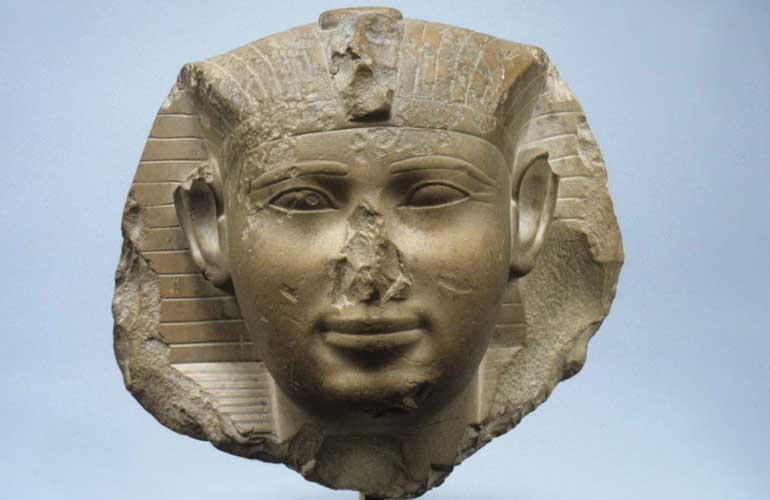
Mentuhotep III Sixth king of the XI Egyptian dynasty, son and successor of Mentuhotep II, who had had him from his wife Temet. His reign, lasted twelve years according to the Royal Papyrus of Turin, over a prosperous and organized country. He himself was characterized by his pacifism and great building activity, especially in Upper Egypt (Elephantine, El-Kab, Tod, Armant, Abydos, Thebes). Mentuhotep III continued the policy of fortifications in the eastern delta area to protect it from Asian nomads. The king’s tomb, of monumental proportions, was built in a valley near Deir el-Bahari, but unfortunately remained unfinished. It succeeded him on the throne of Mentuhotep IV, held by his wife Imi. Mentuhotep III was later worshipped in Abydos and in the delta, in Khata-ana.
Don’t Miss our Egypt vacation packages all inclusive






